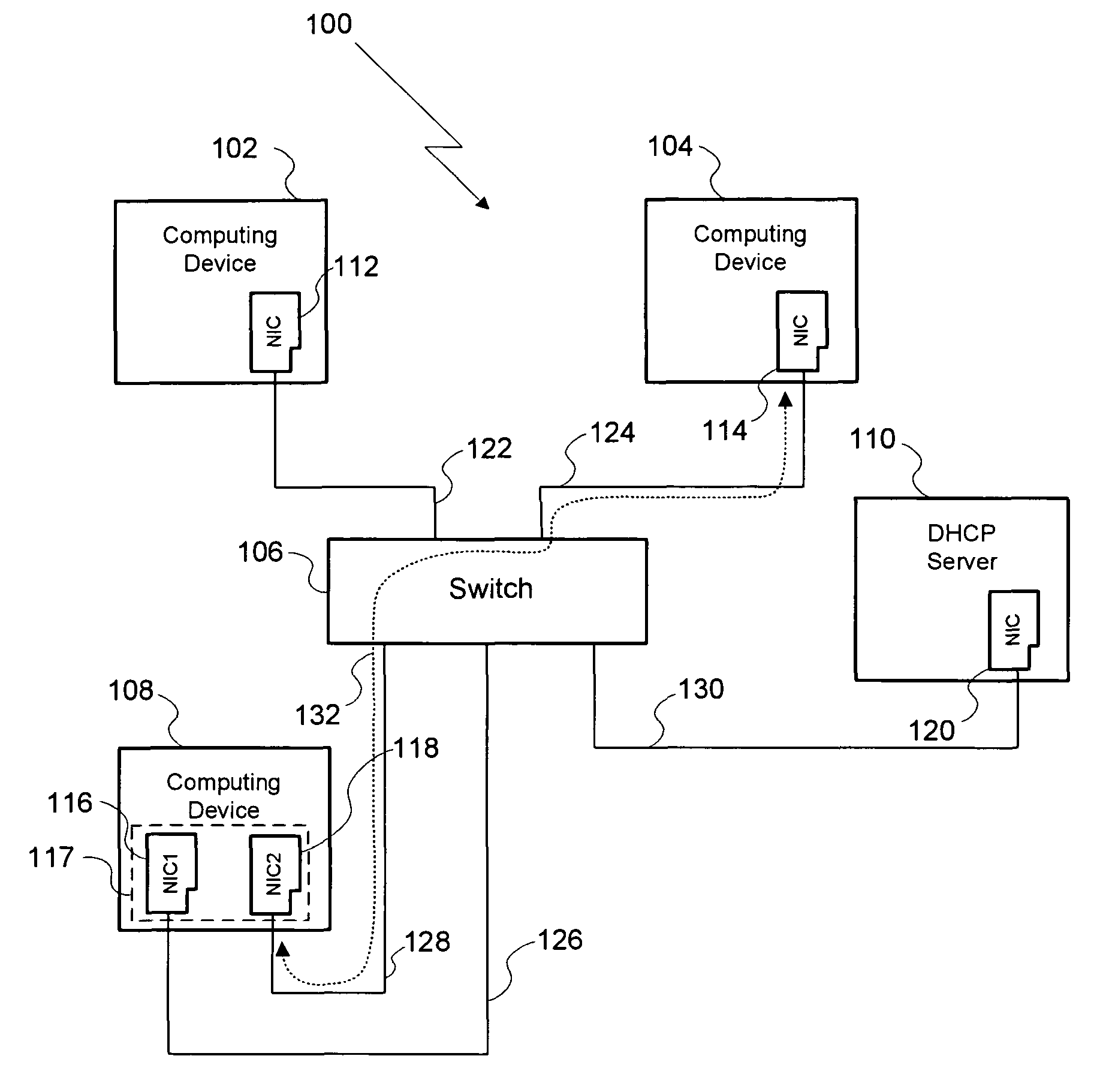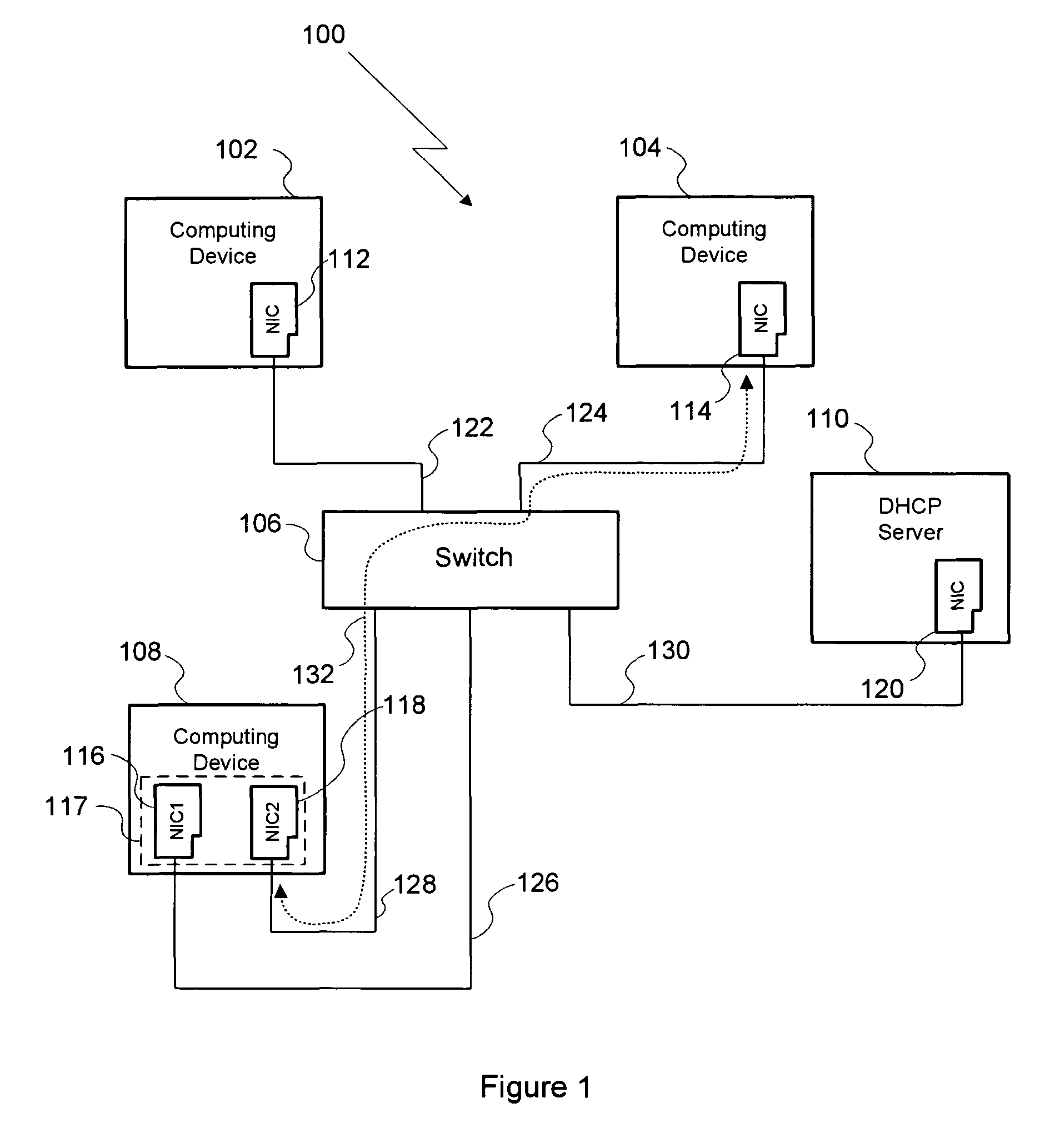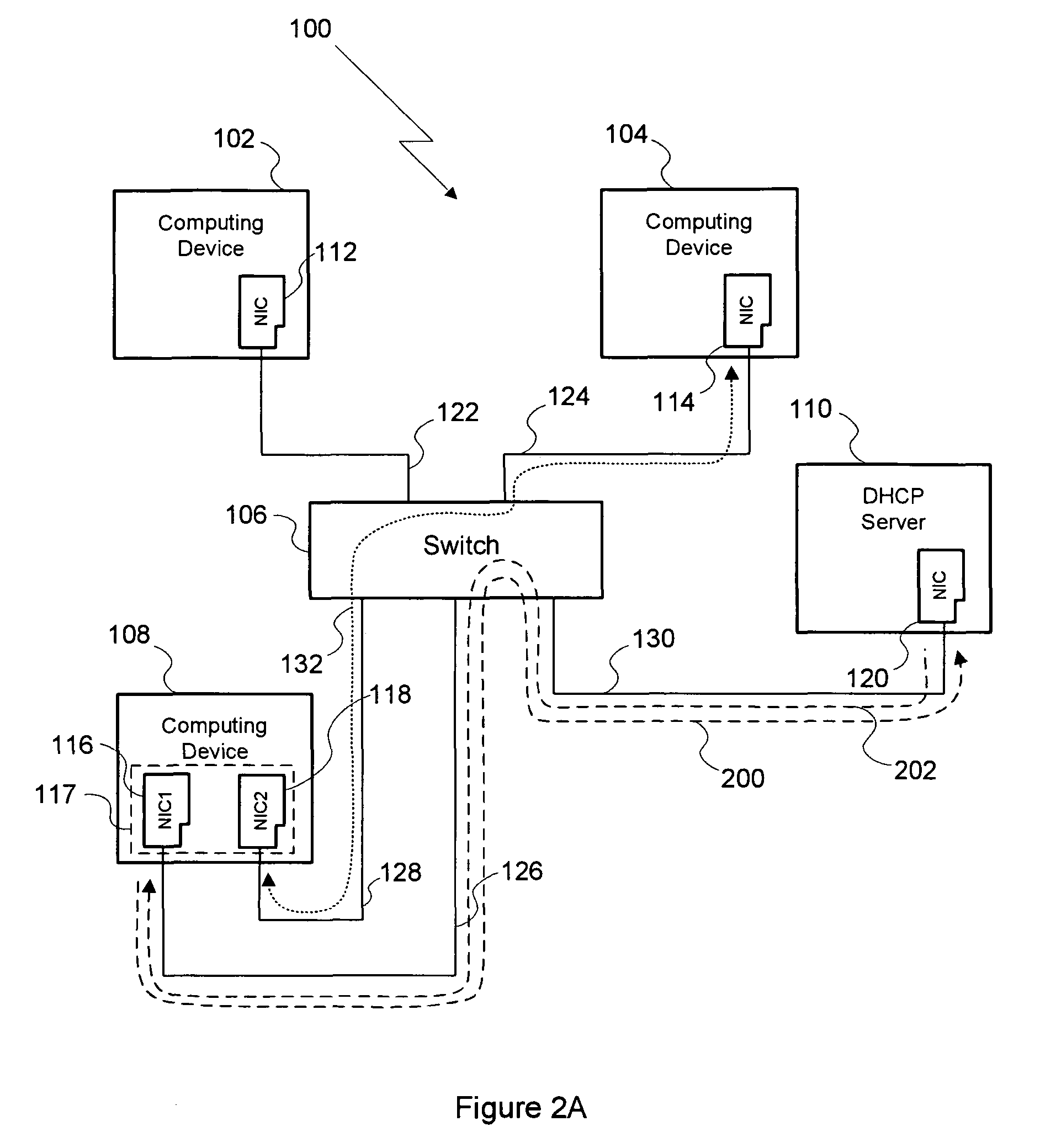System and method for avoiding ARP cache pollution
a technology of address resolution protocol and cache pollution, applied in the field of computer networking, can solve the problems of arp cache pollution problem, initiation of new connections by any nic within the team, and the rate of data transmission between two computing devices is historically limited, so as to avoid arp cache corruption
- Summary
- Abstract
- Description
- Claims
- Application Information
AI Technical Summary
Benefits of technology
Problems solved by technology
Method used
Image
Examples
Embodiment Construction
[0024]As set forth above in the description of FIG. 1, an ARP broadcast request from the first NIC 116 of the first computing device 108 causes ARP cache pollution on the third computing device 104 because of the presence of the TCP / IP connection 132. Again, ARP cache pollution results from the inclusion of the IP address of the first computing device 108 in the ARP broadcast request packet. This IP address is referred to as the “sender's IP address” of the ARP broadcast request packet. However, the second computing device 102 does not require the sender's IP address to transmit an ARP reply to the first NIC 116 of the first computing device 108 because the MAC address of the first NIC 116 also is included in the ARP broadcast request. This MAC address is referred to as the “sender's MAC address” of the ARP broadcast request. As is well-known, the second computing device 102 uses the sender's MAC address to send an ARP reply to the first NIC 116 of the first computing device 108 rat...
PUM
 Login to View More
Login to View More Abstract
Description
Claims
Application Information
 Login to View More
Login to View More - R&D
- Intellectual Property
- Life Sciences
- Materials
- Tech Scout
- Unparalleled Data Quality
- Higher Quality Content
- 60% Fewer Hallucinations
Browse by: Latest US Patents, China's latest patents, Technical Efficacy Thesaurus, Application Domain, Technology Topic, Popular Technical Reports.
© 2025 PatSnap. All rights reserved.Legal|Privacy policy|Modern Slavery Act Transparency Statement|Sitemap|About US| Contact US: help@patsnap.com



